Activity-, Project-, Problem-Based (APB) Instructional Approach
The Activity-, Project-, Problem-Based (APB) instructional approach is an incredibly powerful tool. APB learning experiences scaffold knowledge, provide opportunities for all students to transfer knowledge, and engage students as they apply their new learning to a relevant problem. This inclusive approach often calls for teachers to build new conceptual understanding and pedagogical practices to facilitate impactful APB learning.
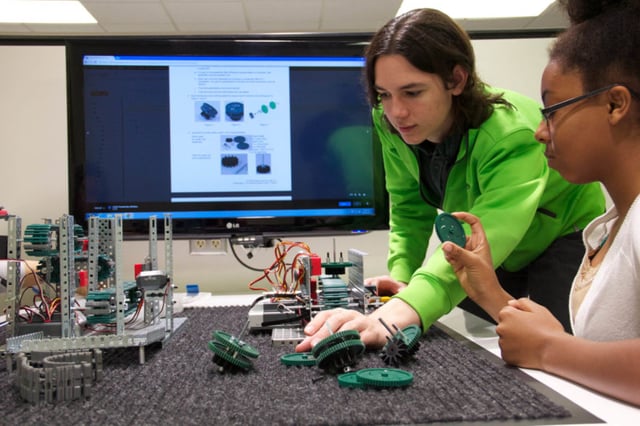
Beyond PBL: A Proven Learning Approach
The APB professional learning sessions are designed to grow participants’ understanding of the APB approach while they build their capacity as facilitators of learning. From exploring exemplars to designing their own APB learning experiences, participants gain expertise and develop strategies to lead powerful student learning. Throughout this experience, participants can make connections to their own course content and curricular resources.
Registering with myPLTW is the best way to make sure you’re getting access to all ongoing professional development opportunities to continue enhancing your skill toolbox. myPLTW houses not only all available professional development opportunities but is also the one-stop-shop to access your transcripts.
Ready to register? Check out our "How-To" guide here!
Register NowActivity-, Project-, Problem-Based Learning

Activities
Activities empower students to develop knowledge and skills they’ll use to navigate a real-world project and problem. Activities are structured, hands-on learning experiences.
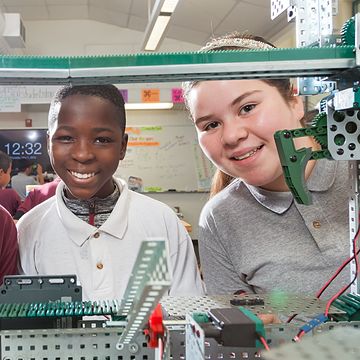
Projects
Projects help students explore a real-world challenge and make meaningful connections. Students draw on the preparation provided in the previous activities to identify and propose solutions.
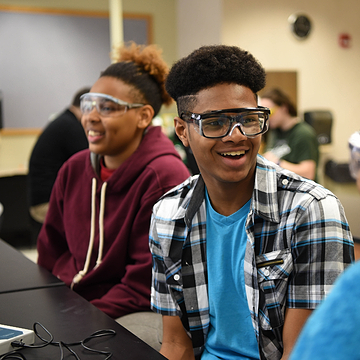
Problems
Problems challenge students to apply what they’ve learned through the activities and projects. They reflect real-world challenges and are open-ended, with no one “right” answer.

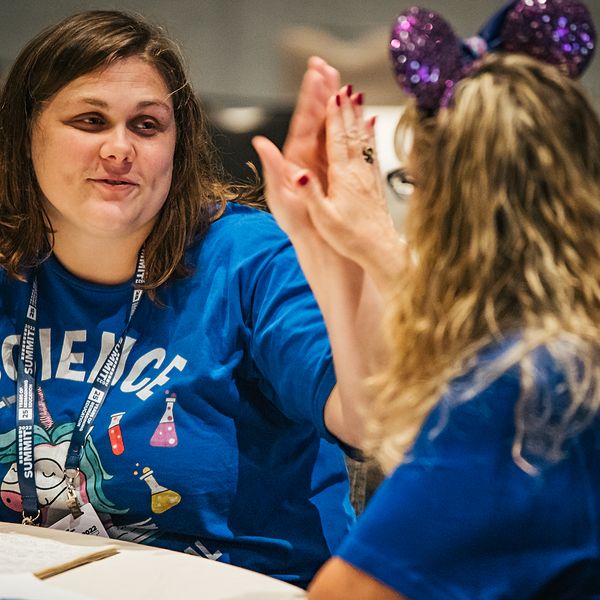
How the APB Approach Works
Teachers set the stage at the beginning of each APB series by introducing students to the final problem they’ll be challenged to solve. Then, students engage in a sequence of related hands-on activities and projects that build upon each other and become increasingly more open-ended.
Throughout this process, students work together in teams to find solutions and develop new skills and knowledge. Finally, students apply what they’ve learned to find and propose solutions to the open-ended, real-world problem introduced at the outset of the APB.
See How APB Goes Beyond PBL
.png?width=450&height=514&name=MicrosoftTeams-image%20(156).png)
A Transformational Shift: Teachers as the Guide
North Side Elementary School received a PLTW Grant supported by Ardagh Group to expand their PLTW Launch program for the 2021-22 school year.
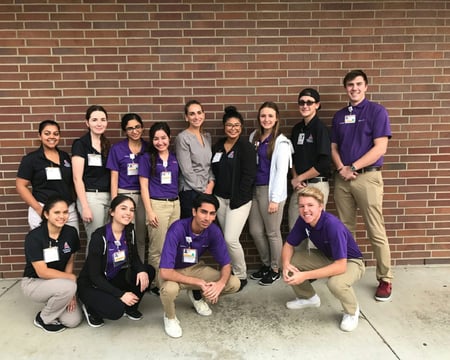
Middle School STEM Class Creates Prosthetic Leg for Former Teacher
Lesa Hall, a former teacher of 17 years in West Plains, Missouri, had a problem that needed solving. After having her leg amputated in 2021, she needed a prosthetic limb that she could use in the shower. Kim Wilson's middle school students had a solution.
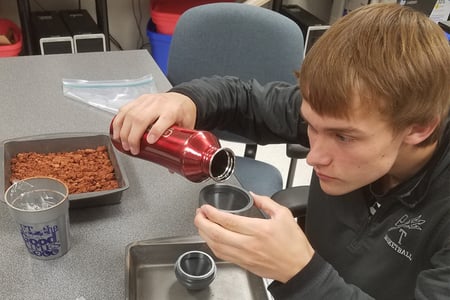
PLTW Launch Impacts Young Learners Even in Summer
At Kansas City Public Schools the summer learning program was developed with project-based learning (PBL) as the foundation and with community giving as the lens. All PBL projects are community service-based projects, allowing students to be engaged and empowered within the local community.
Attend Beyond PBL: A Proven Learning Approach
Experience how APB expands upon project-based learning and problem-based learning approaches to teaching!
Register NowProblem-based Learning
Project Lead The Way (PLTW) is a nonprofit organization that furnishes a transformative learning experience using activity-, project-, and problem-based (APB) instructional design for PreK-12 students and teachers across the United States. APB goes beyond project-based learning and problem-based learning (PBL).
Through the organization’s pathways in computer science, engineering, and biomedical science, students can learn technical skills as well as learn how to solve problems, think critically and creatively, communicate, and collaborate with others. PLTW also provides teachers with the training, resources, and support they need in order to engage students in real-world learning.
PLTW uses activity-, project-, and problem-based (APB) instructional design to create their engaging STEM curriculum. APB centers on hands-on, real-world activities, projects, and problems that help students understand how the knowledge and skills they develop in the classroom may be applied in everyday life. The APB approach scaffolds student learning through structured activities and projects that empower students to become independent in the classroom and help them build skill sets to apply to an open-ended design problem. This approach provides students with unique opportunities to work collaboratively, identify problems, apply what they know, persevere through challenges, find unique solutions, and lead their own learning. To understand APB there should be a baseline understanding of both problem-based learning and project-based learning.
What is project-based learning? Project-based learning is a teaching method in which students gain knowledge and skills by working for an extended period of time to investigate and respond to an authentic, engaging, and complex question, problem, or challenge. PLTW explains that projects, as a part of APB, help students explore a real-world challenge and make meaningful connections. Students draw on the preparation provided in the previous activities to identify and propose solutions. Now that we know what project-based learning is, we need to understand what problem-based learning is.
What is problem-based learning? Problem-based learning is a student-centered approach in which students learn about a subject by working in groups to solve an open-ended problem. This problem is what drives the motivation and the learning. PLTW explains that problems, as a part of APB, challenge students to apply what they’ve learned through the activities and projects. They reflect real-world challenges and are open-ended, with no one “right” answer.
PBL has been used as an acronym for both problem-based learning and project-based learning.
PLTW includes activities to elevate the problem-based learning and project-based learning approaches to teaching and learning. PLTW explains that activities, as a part of APB, empower students to develop knowledge and skills they’ll use to navigate a real-world project and problem. Activities are structured, hands-on learning experiences.
With APB, teachers set the stage at the beginning of each APB series by introducing students to the final problem they’ll be challenged to solve. Then, students engage in a sequence of related hands-on activities and projects that build upon each other and become increasingly more open-ended. Throughout this process, students work together in teams to find solutions and develop new skills and knowledge. Finally, students apply what they’ve learned to find and propose solutions to the open-ended, real-world problem introduced at the outset of the APB.
Essential features of the APB approach include student-centered learning, the teacher in the role of facilitator, collaborative learning experiences, application of learning to solve problems, meaningful feedback and assessment, and a scaffold of learning experiences across the APB series.
Problem-based Learning Activities
Problem-based learning activities are embedded into PLTW STEM curriculum for every grade. PLTW uses problem-based learning as a part of its APB approach to teaching and learning. Problems create a situation in which students must employ many skills, including reasoning, critical thinking, self-regulation, and metacognition – or thinking about their own thinking – to tackle a relevant challenge. Problems are complex and ill-structured; they are designed to make students question what they know and what they don’t yet know.
When looking at problem-based learning benefits, PLTW expands beyond that singular approach to blend many different approaches. Instead of pitting problem-based learning vs. project-based learning, they’ve blended them and embedded activities to enhance and create the activity-, project-, and problem-based approach to teaching and learning. Activities empower students to gain foundational knowledge by reasoning, observing, and thinking critically about the skills they’re learning.
Because knowledge is built over time and through hands-on experiences – not through teacher lectures or textbooks – PLTW applies constructivist principles as it develops APBs. Constructivist learning goals include reasoning, critical thinking, retention, understanding, and use, self-regulation, and mindful reflection. Each of these learning goals can be observed throughout PLTW’s activities, projects, and problems. Using research as a guide, PLTW develops APBs that are most effective for student learning.
Project-based Learning Activities
Project-based learning activities are embedded into PLTW STEM curriculum for every grade as well. PLTW uses project-based learning as a part of its APB approach to teaching and learning. Projects give students the opportunity to reason and think critically as part of a team, as well as a chance to assimilate knowledge and skills as they make application to a realistic situation. PLTW designs projects to allow for deeper understanding of the content.
When looking at project-based learning benefits, PLTW expands beyond that singular approach to blend many different approaches. Instead of pitting project-based learning vs. problem-based learning, they’ve blended them and embedded activities to enhance and create the activity-, project-, and problem-based approach to teaching and learning. PLTW designs activities to help students retain knowledge, which is accomplished by fostering collaborative learning and reflection. Overall, PLTW takes PBL project based learning and integrates activities and projects to provide the best student experience.
PLTW designs student learning with the end goal in mind: empowering students to thrive in an evolving world. With research as a guide, PLTW works backward by envisioning what students should ultimately be able to accomplish, and from there, building progressions of student learning.
First, PLTW curriculum experts conceptualize the ultimate problem. Then, they map a scaffolded learning experience of activities and projects that prepares students to develop what they need to know to tackle the problem. Throughout, PLTW’s experts use a structured design process that weaves relevant standards and in-demand, transportable skills into a compelling sequence of learning experiences – an approach that makes the PLTW classroom unique. In other words, PLTW’s APB sequences empower students to start at an entry level, and as they build relevant skills, they’re able to transfer their learning to a whole new level.
PBL Project
PLTW designs scaffolding that supports students’ construction of knowledge and helps them reach new heights. PLTW students don’t just use a singular PBL project to learn a new skill, but activities and projects are embedded throughout the PreK-12 experience. Learn how PLTW uses the APB approach, including PBL project examples, to scaffold student learning in classrooms across the PreK-12 spectrum:
PLTW Launch- Matter: Floating and Sinking
Students develop an understanding of matter by examining solids and liquids through hands-on activities. They explore floating and sinking as they predict and observe what effect liquids have on different materials. Using the design process, students rely on their knowledge and skills of matter to sketch, build, test, and reflect on a design they have created that will float on water and keep items within the design dry.
Included in this PreK module’s activities, projects, and problems:
- ACTIVITY: Explore Solid and Liquid Matter
- Students are introduced to matter through literature and whole-group discussion. They focus their exploration on two states of matter - solid and liquid. Students explore different solids and sort them based upon their texture. Students also go on a scavenger hunt to identify solid matter that has a specific texture.
- PROJECT: Predict Floating and Sinking
- Through a guided investigation, students explore floating and sinking. As they work through the investigation, they also predict and observe what effects liquids have on different materials and learn which materials float and which ones sink.
- PROBLEM: Build a Boat
- Students use the design process to sketch, build, test, and reflect on a model they create to float across water and keep a message dry.
PLTW Gateway - Medical Detectives
Students play the role of real-life medical detectives as they collect and analyze medical data to diagnose disease. They solve medical mysteries through hands-on projects and labs, measure and interpret vital signs, examine nervous system structure and function, investigate disease outbreaks, and explore how a breakdown within the human body can lead to dysfunction.
Included in this unit’s activities, projects, and problems:
- ACTIVITY: Investigate Disease Agents
- Students explore different types of disease agents and their transmission to examine a patient case with an unknown infection. They diagnose the infection and create an experiment to determine the most effective treatment for their patient.
- PROJECT: Become Diagnostic Detectives
- Students use their knowledge and skills of vital signs, patient symptoms, modes of transmission, and lab analysis to diagnose a new patient. After gathering all necessary information, they analyze all of the evidence, including lab results, to diagnose their patient.
- PROBLEM: Locate the Source of an Outbreak
- Students locate the source of a mysterious toxin that is endangering the health of a community. Students use a map of the community, patient histories, and lab data, then present their findings to help community leaders mitigate the outbreak situation.
High School
PLTW Computer Science – Cybersecurity
Students learn the technical aspects of a highly networked world and the risks to information we all share. They learn operating system and networking concepts, security frameworks, and packet analysis. They learn the types of malware that can attack systems on a network and how to secure and protect a system against them.
Included in this course’s Unit 3 activities, projects, and problems:
- ACTIVITY: Command the OS
- Students learn how an operating system organizes information using command line tools to manage and secure digital information. They learn about user and system processes and how malware spreads around a network.
- PROJECT: Find the Secrets
- Students perform a penetration test on a Linux-based operating system. They see evidence of an ongoing attack, find and remove unauthorized users, suspicious processes, and malicious files. They document their plan of action ahead of time and present their findings in a security update report.
- PROBLEM: Secure the Net
- Students are given an attack scenario and must identify the exploit, secure the system, and make improvements to prohibit future attacks.
PLTW’s APB approach has transformed the classroom experience for millions of students and thousands of educators across the country.
For students, it has brought learning to life by providing them opportunities to work collaboratively, identify problems, persevere through challenges, lead their own learning, and find unique solutions to real-world challenges. For educators, it has renewed their passion for teaching and brought excitement and enthusiasm back into their classrooms.
PLTW curriculum is full of PBL project examples. Learn more about our flexible implementation options by connecting with a PLTW Team Member today!